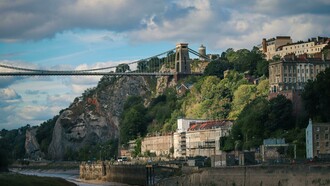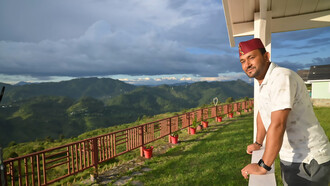I was told that festivals are an integral part of the people of Greece. They are fun filled and a spirit of joy-de-verve pervades these festivities. The festivals not only have religious rituals but also activities like poetry competitions, religious offerings, sports and of course feasting.
The religious sacrifices were not only meant to appease gods but also the everyday needs of the people. It was through the festivals that people of Delphi and elsewhere in Greece could gauge the time and seasons. In the days of yore, the Greek city-states depended on the twelve-month calendar, with each month commencing on the new moon. Every city got its own distinctive names from the corresponding festivals that were held in the respective months.
The everlasting memory of Delphi has been in existence and has always been symbolic of the creative and humanistic outlook of Greece which not only stirred the artistic imagination of the people of Greece but also to a large extent influenced the most important artistic works in Europe and elsewhere in the world.
One person who played a pivotal role in the revitalization of the Delphic Idea was the renowned poet Angelos Sikelianos who along with his wife Eva Palmer-Sikelianos played a pioneering role as far as reviving the classical Greek traditions by way of celebrating the Delphic Festival, which has been hosted ever since the year1927. The Sikelianos couple believed that celebrating the Delphic Festival would go a long way in revitalizing all that was glorious in ancient Greek tradition and culture.
In many ways, the celebration of the Delphic Festival was a great milestone in Greece’s artistic, intellectual and cultural life. This Festival laid the foundation for healthy cooperation between the culturally inclined people of Greece and the rest of the world. In the everlasting memory of Angelos and Eva Sikelianos, their modest house in Delphi has been extensively renovated and today it serves as a Museum of Delphic Festivals. The European Cultural Centre has taken the responsibility for the safekeeping of the Sikelianos home and is a must-visit site for every culturally inclined visitor.
The Festival of Delphi is celebrated in the month of June. Traditional Greek drama and creative works are integral features of the festival. You would do well to get in touch with the European Cultural Center at Delphi prior to your departure with regard to the exact dates and tickets for the festival.
To me, Delphi is a destination that captivates the artistic and cultural senses of the visitors. With the lofty Mount Parnassus and the magnificent remnants of the Temple of Apollo, Delphi indeed is a fascinating cultural destination in the whole of Greece.
What amazed me most was that Delphi is steadfast and resolute enough to confidently restore its past glory and serve as the cultural hub of Greece. As a matter of fact, Delphi’s dynamic and visionary Mayor is hell-bent on reviving the early Pan-Hellenic Games that have a history which is thousands of years.
Towards popularizing the ancient cultural heritage of Delphi, mention must be made of the internationally acclaimed culture buff - Jeanne Bresciani who along with the active cooperation and patronage of the esteemed Isadora Duncan Institute, has been conducting a gala eight-day arts festival.
I was told that to further lure visitors from all over the world to witness this one-of-a-kind Arts Festival, discounted room rates and a plethora of exacting value-for-money holiday packages are being offered to discerning international travelers. Of special significance are the community presentations on the backdrop of Biblical sites which are otherwise inaccessible to ordinary tourists.
During the major festivals held at Delphi, students, academicians and artists from varied disciplines are offered a unique opportunity to take part in these fascinating festivals. To further arose the curiosity of scholars and researchers, practical workshops on the art and culture of ancient Greece which is inclusive of poetry, dance and music are conducted during the festival. Renowned scholars are provided with opportunities to make presentations on the mythological aspects of Delphi, all of which makes for a truly stimulating atmosphere that is surcharged with an air of classicism which is indeed rare in today’s jet-set technocratic world that we live in.
Delphi Theatre
I found the theatre in Delphi sanctuary to be one of the finest specimens of traditional Greek architecture. The theater has been rather innovatively designed in such a manner so as to take the advantage of mountain’s natural undulation for the purpose of seating the crowds, which in turn limited construction. All the characteristic features of Greek theatre are found in the Delphi Theatre like the hemispherical orchestra and covering seats. The theater has been constructed in such a manner that it provides breathtaking views of the picturesque valley. In the days of yore, the theatre hosted many of the popular festivals of Delphi and it was the platform for many musical performances, drama and dance recitals.
We were told that the Delphi theatre was built way back in the 4th century B.C. and the locally available Parnassus limestone was used in constructing the theatre. It has undergone several renovations in the past. The theatre’s 35 rows can easily accommodate approximately five thousand spectators. The seats on the lower rows are believed to have been built during the Hellenic and Roman eras.
Delphi Stadium
The approach to the magnificent Delphi Stadium is through a meandering path that leads all the way to Mount Parnassos and finishes at the stadium. In the days of yore, the stadium was the venue of the all-important Pythian Games. The Pythian Games were the forerunner to the modern-day Olympic Games. The name “Olympic” is derived from the site of the temple compound of “Olympia”. The Pythian Games were the biggest sporting activity of ancient Greece and apart from athletics, there were also events like Chariot races and a race in full body armor. Given its ancient origin, the stadium is very well preserved and one can bask in breathtaking views of the natural panorama. The picture-perfect Krisan plains and the stunning beauty of the Gulf of Itea make for a kaleidoscopic vignette.
The Delphi stadium was built in the city’s uppermost part and it is a fine piece of craftsmanship as it is to some extent cut into the rock. The original stadium was located in the Delphian plains. Later on in the 2nd and 3rd centuries it was moved to its present position. The athletic track was all of 600 feet in length and could easily accommodate 18 athletes. The athletic events were introduced in 591 B.C. in the Pythian Games. The games were organized at an interval every eight years in honor of Apollo's killing of the serpent. The stadium had a capacity to accommodate around 6500 spectators.
The stadium is conspicuous by its Roman triumphal arches. If one takes a closer look at the walls there hoarding which prohibits the consumption of wine. The entire stadium is 187 meters in length while the athletic track measures 178 meters.
Castalia Spring
Our next stop was the Castalia Spring, which is one of the most sanctified springs found in Delphi. It is located in the canyon of Phaedriades. The spring is still very conspicuous by its two enormous fountains that reportedly received water from the spring in ancient times. The later fountain has niches that are cut in the rocky cliff, which in all probability held the offerings to Nymph Castalia.
Greek legend has it that Mimir who was an ancient giant was given the task of protecting a well and it was he who permitted Odin to drink the water of the well in his quest to acquire primal knowledge. There are numerous references to sanctified springs and wells that offered knowledge of the other world, the spiritual world. There are many renowned poets who are of the opinion that Castalian Spring at Delphi indeed has qualities that stimulate ingenuity. Renowned poet John Milton was unanimous in his opinion that the waters of the Castalian Spring had the quality to stimulate poetic motivation.
The origin of Castalian Spring is believed to have been formed with the symbolic winged-horse Pegasus walloping the earth with his hoof.
Legend has it that Castalia was actually the daughter of Achelous - the river god. When Apollo was in hot pursuit of Achelous, Castalia committed suicide by falling from a great height from Mount Parnassus and thus the name of the spring – “Castalia”. The spring was also very much holy to Apollo and the Muses and in ancient times pilgrims who visited Delphi almost as a ritual took a holy dip in the Castalia springs. The spring is all of 36 feet by 10 feet in width and is principally replenished by profound subterranean sources.
Tholos Temple
We rounded off our Delphi trip with a visit to the temple of Tholos located at the sanctuary of Athena Pronaia is in fact a circular edifice. It was built way back between 380 and 360 B.C. The temple is conspicuous by its 20 elegant Doric columns. The exterior columns have a diameter of 14.76 meters. The interior columns are distinctly Corinthian in style and there are 10 Corinthian columns in all.
The Tholos Temple is located in close proximity to the Delphi Sanctuary which is a mere 800 meters away. The temple’s Doric columns are majestic and three of them have been renovated making them the most photographed site in the whole of Delphi.
Memories of Delphi will linger on for a lifetime!!!















